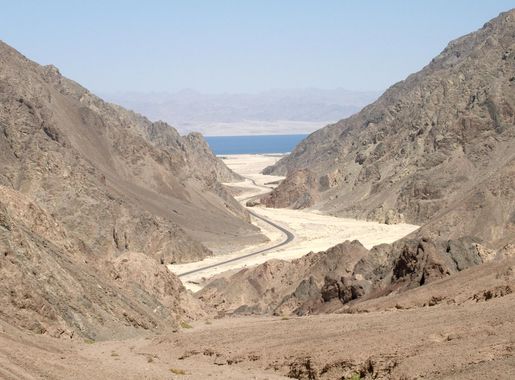
Majestic Mount Sinai: The Sacred Summit
Discover the spiritual and historical wonders of Mount Sinai, where ancient traditions and stunning landscapes converge in the heart of Egypt's Sinai Peninsula.
Mount Sinai, located in the heart of Egypt's Sinai Peninsula, is a place steeped in history, spirituality, and unparalleled natural beauty. This sacred mountain is revered by Jews, Christians, and Muslims alike, as it is believed to be the site where Moses received the Ten Commandments. The awe-inspiring landscape, combined with its religious significance, makes Mount Sinai a must-visit destination for pilgrims and adventurers alike. The climb to the summit of Mount Sinai is an unforgettable experience. Whether you choose to ascend via the 3,750 Steps of Repentance or the longer but gentler Camel Path, the journey is both challenging and rewarding. As you reach the top, you are greeted with a breathtaking panoramic view of the surrounding desert and mountains, especially stunning at sunrise or sunset. The serenity and spiritual atmosphere at the summit provide a perfect setting for reflection and meditation. At the base of Mount Sinai lies the ancient St. Catherine's Monastery, a UNESCO World Heritage Site. This 6th-century monastery houses an incredible collection of religious icons, manuscripts, and artifacts. Visitors can explore the monastery's chapel, library, and the famous Burning Bush, believed to be a direct descendant of the biblical bush from which God spoke to Moses. The monastery's rich history and its continued function as a place of worship add to the profound experience of visiting Mount Sinai.
Local tips in Mount Sinai
- Start your climb early in the morning or late at night to catch the sunrise or sunset from the summit.
- Wear sturdy hiking boots and bring plenty of water and snacks for the climb.
- Respect the religious significance of the site by dressing modestly and behaving appropriately.
- Consider hiring a local guide for added historical insight and a safer climb.
- Visit St. Catherine's Monastery early in the day to avoid the crowds and fully appreciate its treasures.
Majestic Mount Sinai: The Sacred Summit
Mount Sinai, located in the heart of Egypt's Sinai Peninsula, is a place steeped in history, spirituality, and unparalleled natural beauty. This sacred mountain is revered by Jews, Christians, and Muslims alike, as it is believed to be the site where Moses received the Ten Commandments. The awe-inspiring landscape, combined with its religious significance, makes Mount Sinai a must-visit destination for pilgrims and adventurers alike. The climb to the summit of Mount Sinai is an unforgettable experience. Whether you choose to ascend via the 3,750 Steps of Repentance or the longer but gentler Camel Path, the journey is both challenging and rewarding. As you reach the top, you are greeted with a breathtaking panoramic view of the surrounding desert and mountains, especially stunning at sunrise or sunset. The serenity and spiritual atmosphere at the summit provide a perfect setting for reflection and meditation. At the base of Mount Sinai lies the ancient St. Catherine's Monastery, a UNESCO World Heritage Site. This 6th-century monastery houses an incredible collection of religious icons, manuscripts, and artifacts. Visitors can explore the monastery's chapel, library, and the famous Burning Bush, believed to be a direct descendant of the biblical bush from which God spoke to Moses. The monastery's rich history and its continued function as a place of worship add to the profound experience of visiting Mount Sinai.
When is the best time to go to Mount Sinai?
Iconic landmarks you can’t miss
Mount Moses (Sinai)
Explore the spiritual and natural wonders of Mount Moses, the sacred peak where history and beauty converge in Egypt's Sinai Peninsula.
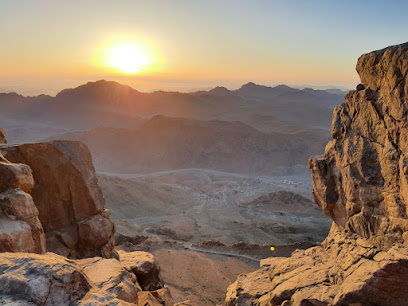
Byzantine Dam
Discover the Byzantine Dam in South Sinai, a historical landmark blending ancient engineering with breathtaking desert landscapes for an unforgettable experience.
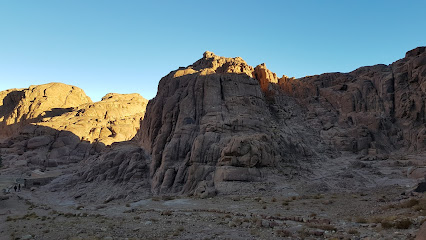
Moses' cave
Explore the historic Moses' Cave in South Sinai, a significant site where biblical history and breathtaking landscapes come together.
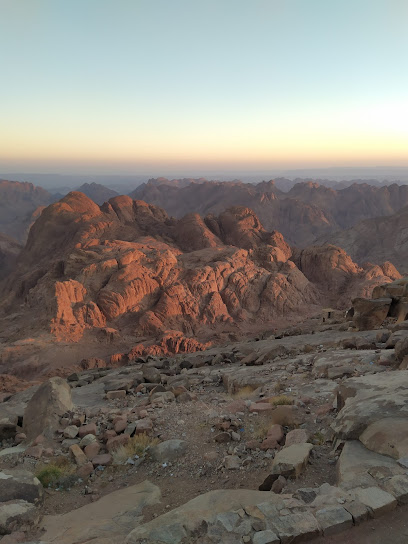
Unmissable attractions to see
Peace Square
Explore the tranquil beauty and cultural richness of Peace Square in Sharm Al Sheikh, a perfect destination for relaxation and local experiences.
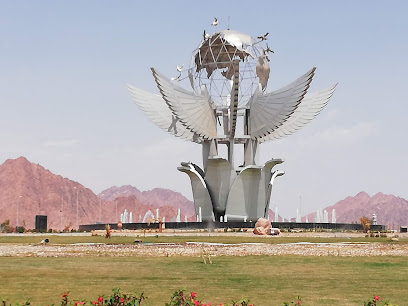
Camel statue
Visit the Camel Statue in Saint Catherine, a stunning tribute to Bedouin culture amidst the breathtaking landscapes of South Sinai.
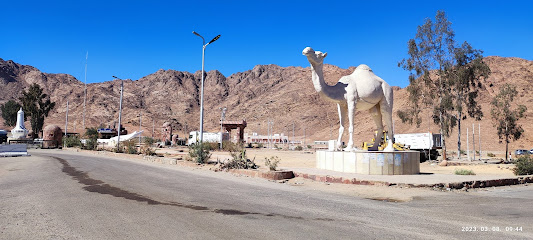
Abbas Mountain
Discover the stunning landscapes and exhilarating hiking trails at Abbas Mountain in South Sinai, a true natural wonder for adventurous travelers.
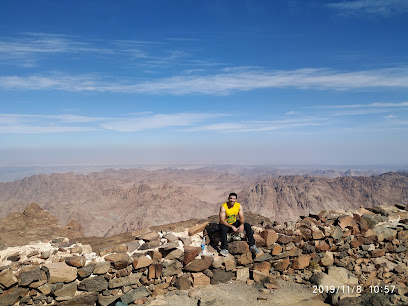
Saint Catherine Reserve Ticket Office
Explore the breathtaking landscapes and rich history of the Saint Catherine Reserve, a must-visit destination in Egypt's South Sinai region.
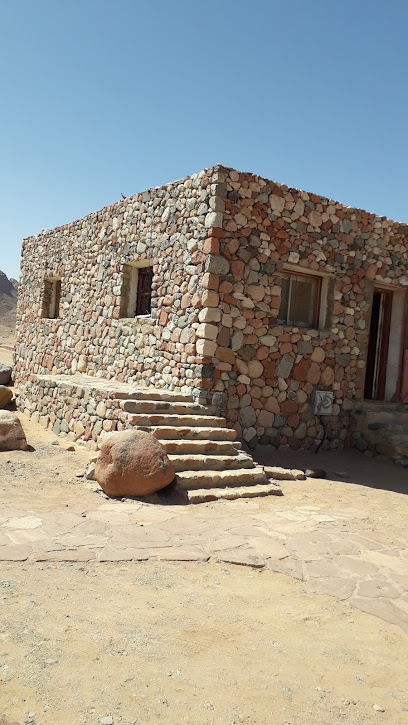
مزرعة عم رمضان
Discover the serene beauty of مزرعة عم رمضان, a tranquil garden in South Sinai, perfect for relaxation and experiencing local nature.
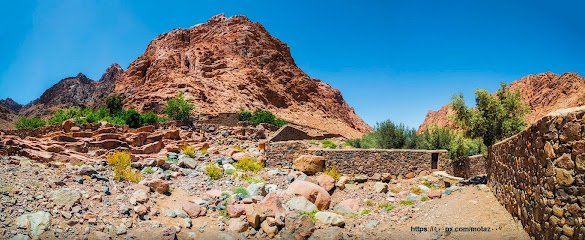
Mashraba dive site
Discover the underwater paradise of Mashraba Dive Site in Egypt, where vibrant marine life and stunning coral reefs await every diving enthusiast.
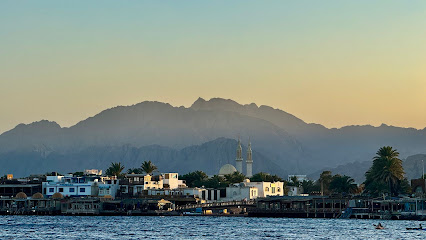
Oda Garden
Discover tranquility in the heart of Saint Catherine at Oda Garden, a lush retreat filled with vibrant flora and serene landscapes.
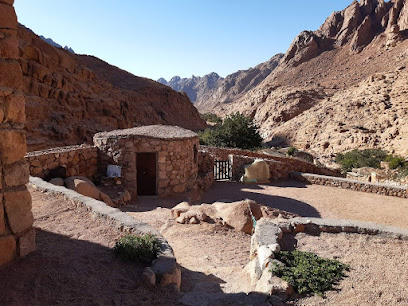
رأس راية
Explore the picturesque beauty and tranquil waters of Ras Rayyah, a stunning tourist destination in South Sinai, perfect for relaxation and adventure.

Divers memorial
Discover the touching Divers Memorial, a serene tribute to ocean explorers along Egypt's breathtaking coastline.
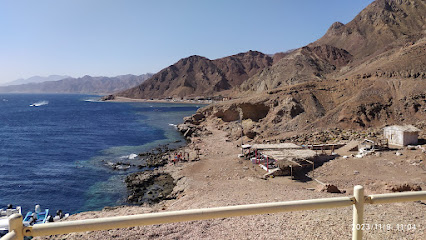
Nomad Safari
Explore the breathtaking landscapes and rich cultural heritage at Nomad Safari, the ultimate adventure destination in South Sinai, Egypt.
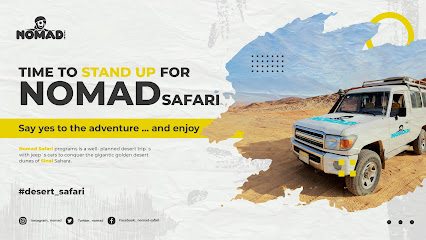
Shoob Garden
Discover the serene beauty of Shoob Garden in South Sinai, a tranquil oasis filled with exotic flora and rich cultural heritage.
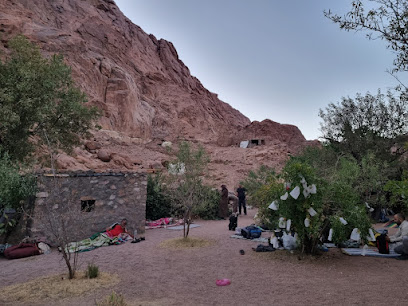
Ain Eltofaha
Experience the stunning landscapes and rich culture of Ain Eltofaha, a hidden gem in South Sinai perfect for relaxation and adventure.
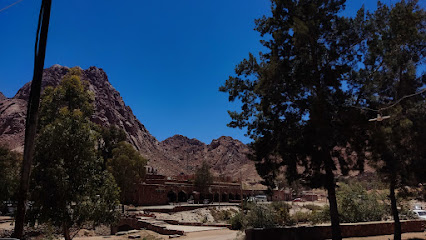
Al Zeituna | الزيتونة
Discover the serene beauty of Al Zeituna, a nature preserve in Saint Catherine, offering breathtaking landscapes and diverse wildlife in Egypt's Sinai Peninsula.
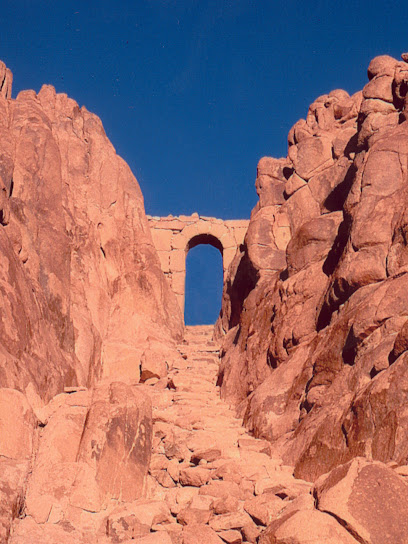
Makhroum Mountain
Discover the breathtaking landscapes of Makhroum Mountain, a stunning natural attraction in South Sinai, perfect for adventure and exploration.
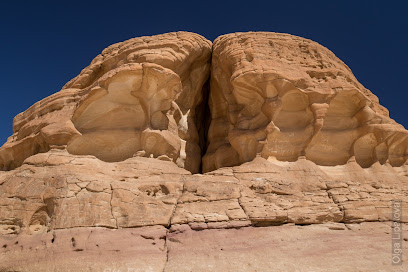
The caves dive site
Discover the breathtaking underwater landscapes and vibrant marine life at The Caves Dive Site in Dahab, a diver's paradise in South Sinai.
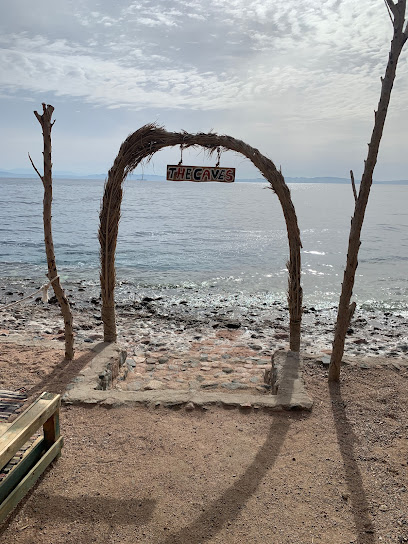
Essential places to dine
Rest House
Savor the essence of Egypt at Rest House - where authentic flavors meet warm hospitality in South Sinai.
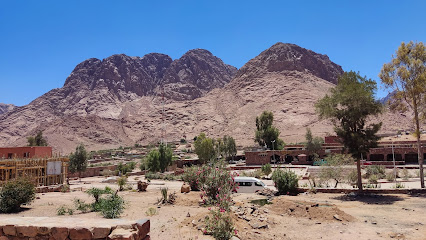
Cleopatra Restaurant - Soliman Rest & Cafe ( مطعم وكافيه سُلـيِّمان )
Experience authentic Egyptian cuisine at Cleopatra Restaurant in Sharm El Sheikh - where flavor meets hospitality.
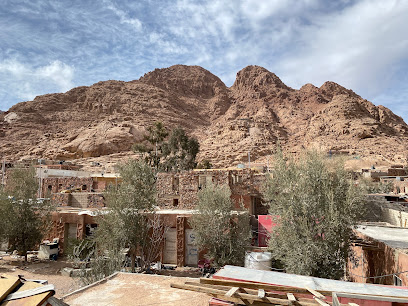
دار سلامة Dar Salama
Experience authentic Egyptian cuisine at Dar Salama in South Sinai - where every meal tells a story.
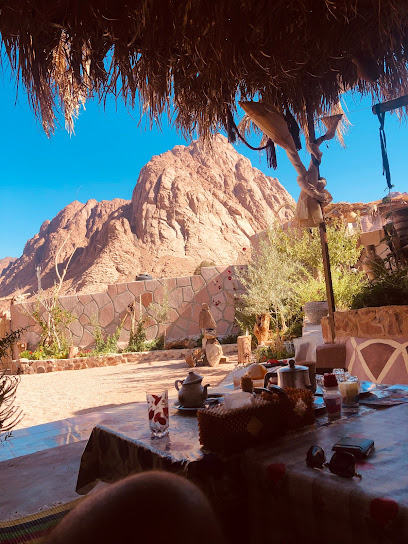
واحة VIP
Experience exquisite dining at Oasis VIP in South Sinai - where authentic flavors meet stunning natural beauty.
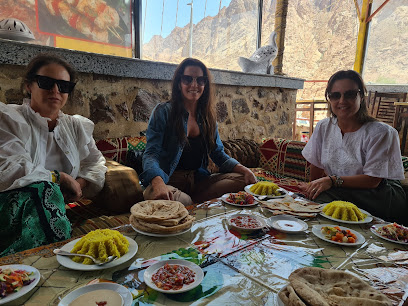
Markets, malls and hidden boutiques
SOHO Square Sharm El Sheikh
Discover the vibrant SOHO Square in Sharm El Sheikh, a premier shopping and entertainment hub offering a unique blend of culture, cuisine, and nightlife.
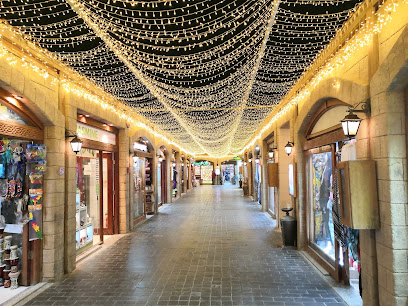
Saint Catherine's Monastery
Explore the ancient wonders of Saint Catherine's Monastery, a UNESCO World Heritage Site nestled at the foot of Mount Sinai, rich in history and spirituality.
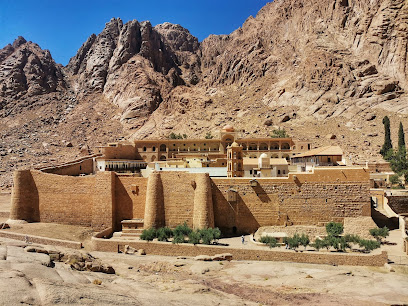
Mount Moses (Sinai)
Explore the sacred beauty of Mount Moses, a revered pilgrimage site offering breathtaking views and rich spiritual history in South Sinai.
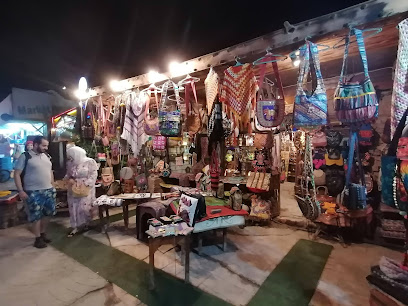
Imhotep Alabaster Luxor
Explore Imhotep Alabaster Luxor, your one-stop destination for exquisite Egyptian souvenirs and authentic crafts in the heart of Luxor.
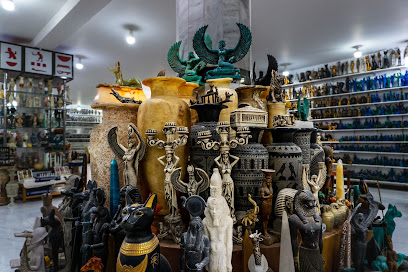
3 Pyramids Shopping Center( free Wi-Fi) Free round trip transfer
Explore the vibrant 3 Pyramids Shopping Center in Hurghada, your one-stop destination for souvenirs, fashion, and essentials amidst a lively shopping atmosphere.
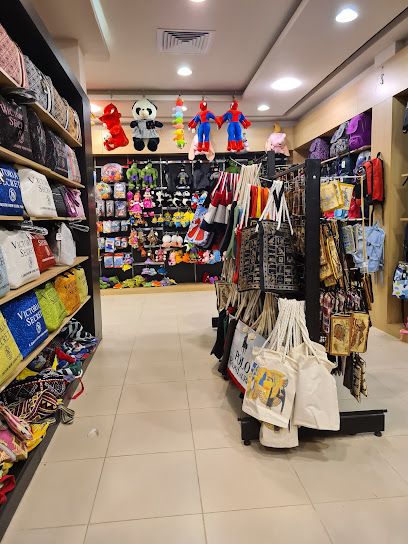
Monastery Bazar's
Discover unique crafts, local delicacies, and vibrant culture at Monastery Bazar's in South Sinai—your gateway to authentic Egyptian shopping experiences.
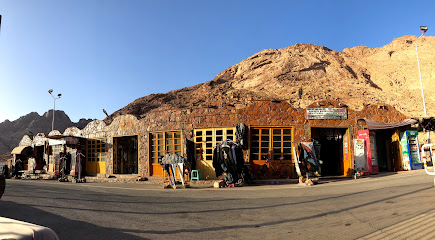
Egyptian Lionel Richie Supermarket
Experience authentic Egyptian shopping at the Egyptian Lionel Richie Supermarket – where quality meets affordability in Sharm Al Sheikh.
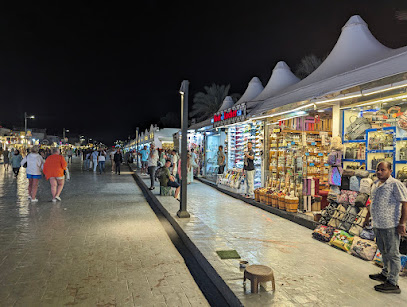
La Strada Mall
Discover the ultimate shopping experience at La Strada Mall in Sharm El Sheikh, where local culture meets global brands in a vibrant setting.
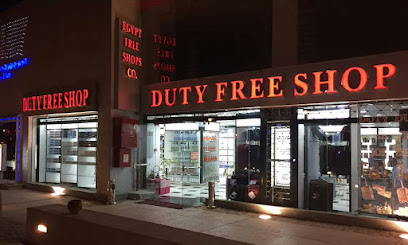
Nomad Gallery - Zamalek Main Branch
Explore the vibrant artistry of Egypt at Nomad Gallery, your destination for unique jewelry, antiques, and handcrafted treasures in Zamalek.
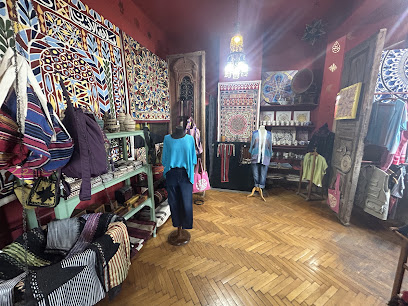
Why Not
Explore the unique charm of Why Not Gift Shop in South Sinai, where vintage treasures and local craftsmanship await every visitor.
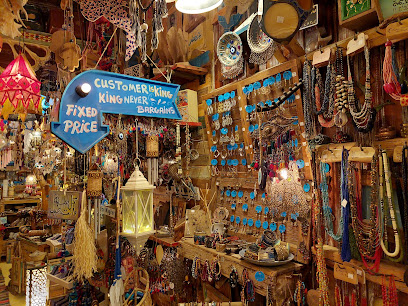
Abu Sabel 2 Supermarket
Explore the flavors of South Sinai at Abu Sabel 2 Supermarket, where local products meet tourist convenience in the heart of Saint Catherine.
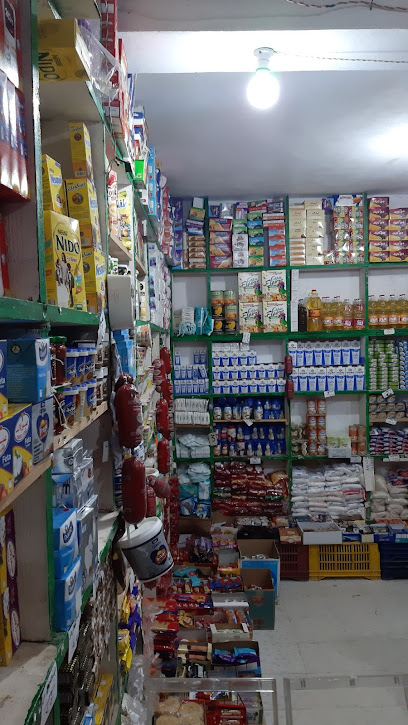
Sinai Herbs Shop - St. Catherine's Monastery
Explore local antiques and clothing at Sinai Herbs Shop, a hidden gem near St. Catherine's Monastery, offering authentic souvenirs and cultural treasures.
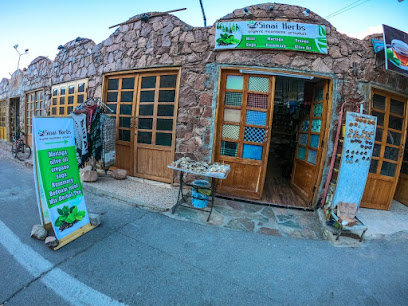
Foil center DaCha
Explore the thrill of windsurfing at Foil Center DaCha, your gateway to adventure in El Tor's stunning coastline.
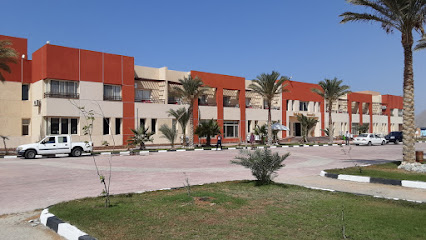
Mardi boys supermarket
Explore Mardi Boys Supermarket in Saint Catherine for local flavors, fresh produce, and essentials to enhance your travel experience in Egypt.

St. Helena Gallery
Discover the vibrant St. Helena Gallery in Sharm El Sheikh, a cultural and shopping haven filled with local art, cuisine, and unique finds.
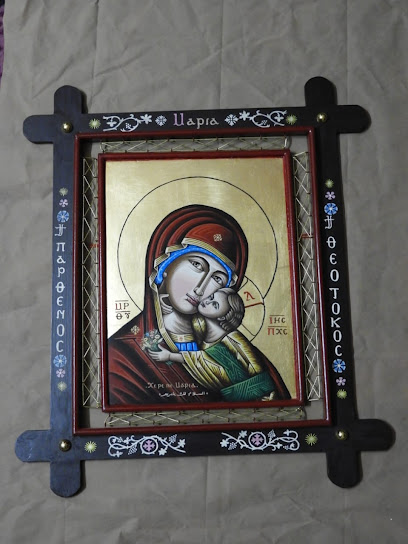
Essential bars & hidden hideouts
Yalla Bar Dahab
Discover the perfect blend of food, drinks, and stunning views at Yalla Bar Dahab, the heart of Dahab's vibrant social scene.
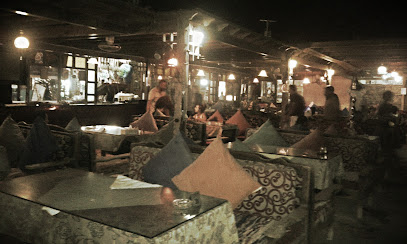
Churchill's Sports Bar & Grill
Dive into the vibrant atmosphere of Churchill's Sports Bar & Grill, where sports meet delicious dining in South Sinai.
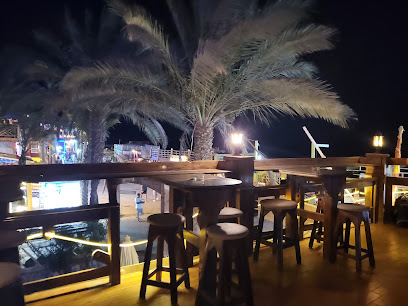
Blue Beach, Beach Bar
Discover the charm of Blue Beach Bar in Dahab, where stunning ocean views meet refreshing drinks and a laid-back atmosphere for the perfect beach getaway.
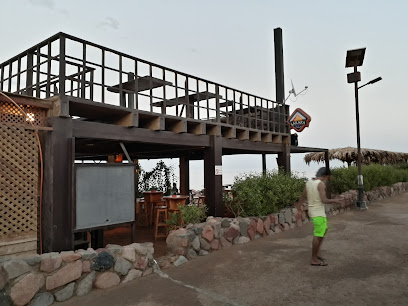
The View Bar
Experience breathtaking views and vibrant atmosphere at The View Bar in Sharm El Sheikh, where relaxation meets lively nightlife.
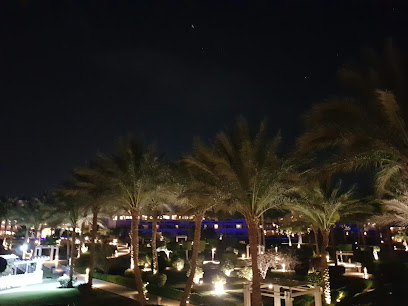
Ice Bar
Experience the enchanting Ice Bar in Sharm El Sheikh, where icy drinks and stunning decor come together for an unforgettable night out.
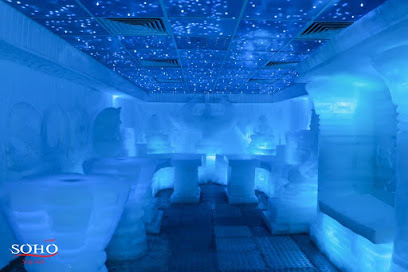
Lagoon Pool Bar
Discover the Lagoon Pool Bar in Nabq Bay, Sharm El Sheikh - your ultimate tropical retreat for refreshing drinks and relaxation.
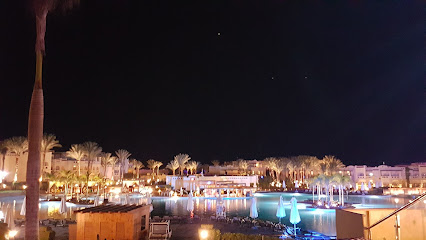
Sultan Beach Bar
Experience the vibrant ambiance and breathtaking views at Sultan Beach Bar in Second Sharm Al Shiekh, your perfect tropical escape.

The Furry Cup
Discover the cozy charm of The Furry Cup, a perfect bar in Saint Catherine for relaxation and local flavor, offering delightful drinks and warm ambiance.
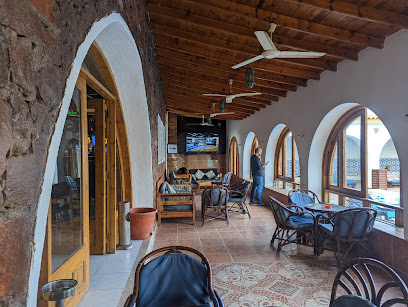
باهاما ماما
Discover the tropical oasis of Bahama Mama in Sharm El Sheikh, where vibrant nightlife meets exquisite cocktails and unforgettable experiences.
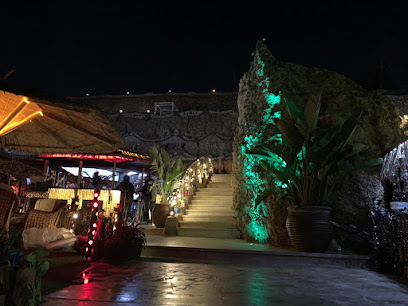
Swimming Pool Bar Iberotel Palace
Discover the perfect blend of relaxation and refreshment at the Swimming Pool Bar Iberotel Palace in Sharm El Sheikh, where sun-soaked days meet vibrant evenings.

Main pool
Experience the ultimate relaxation at the Main Pool in Sharm El Sheikh, a luxurious retreat with stunning views and refreshing drinks.
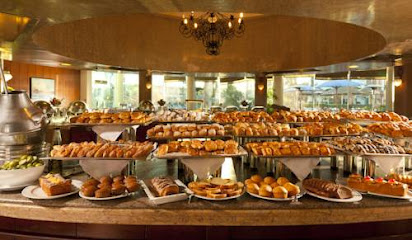
Drift
Experience the best cocktails in Dahab at Drift, where stunning sea views and a vibrant atmosphere await you.
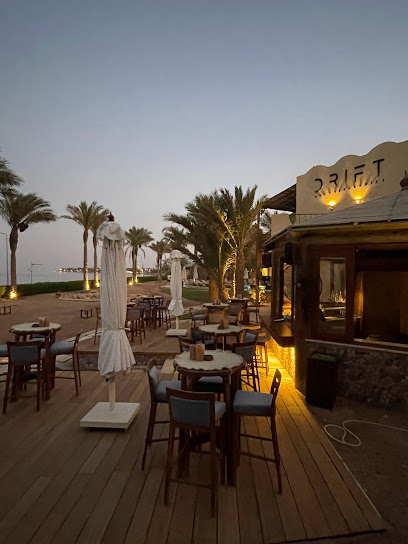
Beach Bar
Discover Beach Bar in Second Sharm Al Shiekh, where stunning views, refreshing drinks, and a friendly atmosphere await beach lovers.
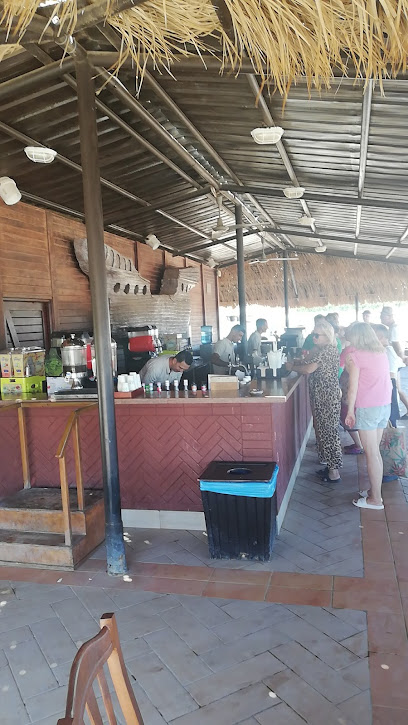
Juices Fresh
Experience the essence of Nuweiba at Juices Fresh, where vibrant cocktails meet the serene beauty of South Sinai's coastline.
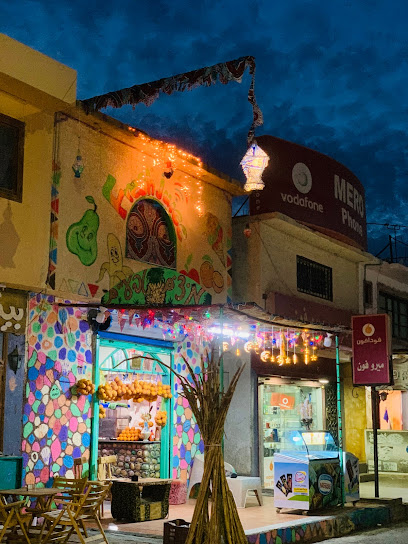
Latinos Bar
Experience the vibrant nightlife at Latinos Bar in Sharm El Sheikh, where refreshing drinks and lively atmosphere meet.
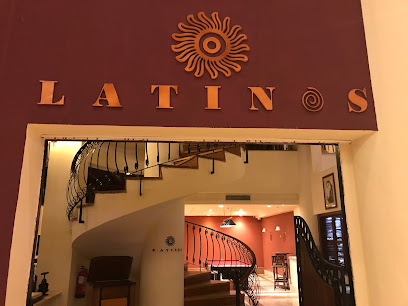
Local Phrases about Mount Sinai
-
- Helloمرحبا
[marhaba] - Goodbyeوداعا
[wadaa'an] - Yesنعم
[naam] - Noلا
[laa] - Please/You're welcomeمن فضلك
[min fadlak] - Thank youشكرا
[shukran] - Excuse me/Sorryعذرا
[aathara] - How are you?كيف حالك؟
[kayf halak?] - Fine. And you?بخير. وأنت؟
[bikhair. wa'ant?] - Do you speak English?هل تتحدث الإنجليزية؟
[hal tutahaddath al'inglizia?] - I don't understandأنا لا أفهم
[ana la afham]
- Helloمرحبا
-
- I'd like to see the menu, pleaseأرغب في رؤية القائمة، من فضلك
[urghib fi ru'yat alqaimah, min fadlak] - I don't eat meatأنا لا آكل اللحوم
[ana la aakol allahm] - Cheers!في صحتك!
[fi sahtak!] - I would like to pay, pleaseأرغب في الدفع، من فضلك
[urghib fi alduf', min fadlak]
- I'd like to see the menu, pleaseأرغب في رؤية القائمة، من فضلك
-
- Help!النجدة!
[alnajdah!] - Go away!انصرف!
[insiraf!] - Call the Police!اتصل بالشرطة!
[atassil bialsurata!] - Call a doctor!اتصل بطبيب!
[atassil bitalib!] - I'm lostلقد ضللت الطريق
[laqad dalalt altariq] - I'm illأنا مريض
[ana mareed]
- Help!النجدة!
-
- I'd like to buy...أرغب في شراء...
[urghib fi shira...] - I'm just lookingأنا أتفرج فقط
[ana atafaraj faqat] - How much is it?كم سعره؟
[kam sa'aruh?] - That's too expensiveهذا غالي جدا
[hatha ghali jiddan] - Can you lower the price?هل يمكنك خفض السعر؟
[hal yumkinuk kafd alsa'ar?]
- I'd like to buy...أرغب في شراء...
-
- What time is it?كم الساعة؟
[kam alssa'ah?] - It's one o'clockالساعة الواحدة
[alssa'ah alwahidah] - Half past (10)العاشرة والنصف
[al'ashirah walinisf] - Morningصباح
[sabah] - Afternoonبعد الظهر
[ba'd aldhuhur] - Eveningمساء
[masa'] - Yesterdayالبارحة
[albariha] - Todayاليوم
[alyawm] - Tomorrowغدا
[ghadan] - 1واحد
[wahid] - 2اثنان
[ithnan] - 3ثلاثة
[thulatha] - 4أربعة
[arba'a] - 5خمسة
[khamsa] - 6ستة
[sitta] - 7سبعة
[sab'a] - 8ثمانية
[thamania] - 9تسعة
[tasia] - 10عشرة
[ashara]
- What time is it?كم الساعة؟
-
- Where's a/the...?أين يوجد...؟
[ayn yujad...?] - What's the address?ما هو العنوان؟
[ma huwa al'anaan?] - Can you show me (on the map)?هل يمكنك أن تريني (على الخريطة)؟
[hal yumkinuk 'an tureeni (ala alkhareeta)?] - When's the next (bus)?متى يصل الحافلة التالية؟
[mata yusal alhafilat altaliat?] - A ticket (to ....)تذكرة (إلى ...)
[tazkirah (ila ...)]
- Where's a/the...?أين يوجد...؟
History of Mount Sinai
-
Mount Sinai is famously known as the mountain where Moses received the Ten Commandments from God. This significant event is documented in the Bible's Book of Exodus and has made the mountain a pivotal site in Judeo-Christian tradition. Pilgrims and scholars have visited the area for centuries, drawn by its deep spiritual and historical importance.
-
Founded in the 6th century by Emperor Justinian I, the Monastery of Saint Catherine is one of the oldest working Christian monasteries in the world. It is located at the foot of Mount Sinai and is a UNESCO World Heritage Site. The monastery houses an incredible collection of Christian manuscripts and icons, some dating back to the early Byzantine period.
-
According to Christian tradition, the Monastery of Saint Catherine is home to the biblical Burning Bush from which God spoke to Moses. This sacred shrub is a major pilgrimage site, and its story is integral to the understanding of Moses' mission to lead the Israelites out of Egypt.
-
Mount Sinai holds significance in Islam as well. It is mentioned in the Quran, and the mountain is considered a sacred site. Islamic tradition holds that God made a covenant with the Israelites at Mount Sinai, and it is a place of reverence for Muslims, Jews, and Christians alike.
-
The area surrounding Mount Sinai is inhabited by Bedouin tribes, who have lived in the Sinai Peninsula for centuries. Their rich cultural heritage, traditional lifestyle, and knowledge of the desert landscape add another layer of depth to the historical fabric of the region. Visitors often engage with Bedouin guides to explore the mountain and its surroundings.
-
During the Byzantine era, Mount Sinai was a significant site for Christian monasticism. Numerous hermitages and small chapels were built in the area, contributing to the spiritual and architectural landscape seen today. The Byzantine influence is evident in the art and culture preserved within Saint Catherine's Monastery.
-
In recent years, archaeological excavations around Mount Sinai have unearthed fascinating artifacts, including ancient inscriptions and relics that offer insights into the region's historical and religious significance. These discoveries continue to attract historians and archaeologists from around the world.
-
Known as Jebel Musa in Arabic, Mount Sinai's peak is a destination for pilgrims and adventurers alike. The trek to the summit is a spiritually enriching journey, offering breathtaking views and a profound sense of connection to the past. It is believed to be the very spot where Moses stood when he received the Ten Commandments.
-
Mount Sinai and the surrounding region are a melting pot of various cultures and religions. The intercultural interactions over millennia have left a rich tapestry of traditions, languages, and practices. This diverse cultural heritage is evident in the festivals, culinary traditions, and local crafts found in the area.
-
Beyond its religious and historical significance, Mount Sinai is also a geological wonder. The rugged granite peaks and unique rock formations attract geologists and nature enthusiasts. The mountain's geology provides a fascinating window into the Earth's ancient past and continues to be a site of scientific inquiry.
Mount Sinai Essentials
-
Mount Sinai is located in the Sinai Peninsula of Egypt. The nearest major city is Sharm El Sheikh, which has an international airport. From Sharm El Sheikh, tourists can take a bus, taxi, or organized tour to reach Mount Sinai. The journey by road typically takes about 2-3 hours. Alternatively, you can fly into Cairo and take a domestic flight to Sharm El Sheikh, followed by a road journey to Mount Sinai.
-
Local transportation options around Mount Sinai include taxis and minibuses. Taxis can be hired for short trips or full-day excursions. Minibuses operate on set routes and are a cost-effective way to travel between towns and popular tourist spots. For those looking to explore at their own pace, renting a car is also an option, although driving in the Sinai Peninsula requires caution due to varying road conditions.
-
The official currency in Egypt is the Egyptian Pound (EGP). Credit cards are accepted in most hotels, restaurants, and larger shops, but it is advisable to carry cash, especially when visiting smaller establishments or remote areas. ATMs are available in nearby towns like Sharm El Sheikh and Dahab. It's wise to have enough cash on hand before heading to Mount Sinai.
-
Mount Sinai is generally safe for tourists, but it is always best to stay vigilant. Avoid traveling alone at night and keep your belongings secure. Be cautious of your surroundings in crowded areas. While the crime rate is relatively low, it's always best to exercise standard precautions. Areas like Sharm El Sheikh are well-patrolled and considered safe for tourists.
-
In case of emergency, dial 122 for police, 123 for ambulance, and 180 for fire services. There are medical facilities in Sharm El Sheikh and Dahab, which are equipped to handle most emergencies. Ensure you have travel insurance that covers medical emergencies. For minor issues, there are pharmacies in the nearby towns where you can purchase over-the-counter medications.
-
Fashion: Do dress modestly, especially when visiting religious sites. Avoid wearing revealing clothing. Religion: Do respect local customs and traditions. Remove your shoes when entering mosques and cover your head when appropriate. Public Transport: Do be respectful and follow local etiquette. Don't eat or drink on public transport. Greetings: Do greet people with a handshake or a slight nod. Eating & Drinking: Do try local delicacies and accept food offerings graciously. Don't refuse hospitality, as it is considered impolite.
-
To experience Mount Sinai like a local, consider joining a guided hike to the summit for sunrise, which is a popular activity among both locals and tourists. Visit St. Catherine's Monastery, one of the oldest working Christian monasteries in the world. Engage with local Bedouins, who can offer unique insights into the area's history and culture. Don't miss trying traditional Bedouin tea and local dishes.
Nearby Cities to Mount Sinai
-
Things To Do in Sharm El Sheikh
-
Things To Do in El Gouna
-
Things To Do in Hurghada
-
Things To Do in Eilat
-
Things To Do in Aqaba
-
Things To Do in Wadi Rum
-
Things To Do in Suez
-
Things To Do in Petra
-
Things To Do in Ma'an
-
Things To Do in Tabuk
-
Things To Do in Ismailia
-
Things To Do in Dana
-
Things To Do in Beni Suef
-
Things To Do in Tafilah
-
Things To Do in Beersheba

